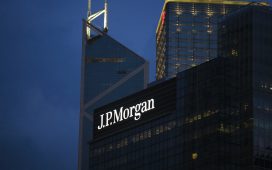Individuals as direct and indirect (via mutual funds) investors today own a record-high of 18.2% of the total market cap, unchanged from the previous quarter (Rs74.5 lakh crore; 5Y/10Y CAGR: +35.7%/16.9%), outpacing the share of FPIs in FY25 for the first time since 2006.
Since June 2021, with a strong resurgence in SIP-led inflows, DMF ownership in NSE-listed companies has climbed steadily, reaching all-time highs.
Also Read | New investors’ dilemma: Is flexi cap fund alone sufficient to deploy Rs 10 lakh for meeting goals
Passive holdings by DMFs through ETFs and index funds in NSE-listed companies have surged in recent years. The AUM of passive funds grew at a robust CAGR of 59% over the past decade, substantially outpacing the 24% annualized growth of actively managed equity funds, driven by a low starting base and rising retail participation in passive strategies.
In Q4FY25, passive funds’ AUM rose 1.9% QoQ to Rs 8.2 lakh crore, recovering from a marginal decline in the previous quarter, but grew by a robust 25.8% in the whole of FY25. In contrast, actively managed equity fund AUM declined 3.4% QoQ to Rs 34.2 lakh crore in the March quarter, though it still posted a healthy 23.6% increase over FY25. As a result, the share of passive funds in total equity-oriented mutual fund AUM climbed 72 bps QoQ to a record high of 20.8% as of March 2025.
Of the 10.4% of NSE-listed market capitalization held by DMFs, passive funds’ share rose 16 bps QoQ to a new peak of 2.0%—breaking out of the 1.7 — 1.8% range seen over the past eight quarters. Active fund ownership also increased by 25 bps to a record 8.4%. In terms of free-float market capitalization, passive funds’ share rose 30 bps QoQ to an all-time high of 4.0%, while active funds’ share increased for the seventh consecutive quarter, up 42 bps to 16.8%.
Passive mutual funds AUM, across equity, debt, gold, silver, and others, reached an all-time high of Rs 11.6 lakh crore in April 2025 compared to Rs 11.1 lakh crore in March 2025, registering a strong 21.8% YoY/3.8% MoM expansion.
Among passive categories, income/debt-oriented index funds, specifically Target Maturity Index Funds (TMIFs), recorded the highest sequential growth of 9.3%, with AUM rising from Rs 96,025 crore in March 2025 to over Rs 1 lakh crore in April 2025. This was followed by Gold ETF, which registered a 6.2% increase in AUM, primarily driven by mark-to-market gains, more than making up for reduced net investments.
After a steady decline over the previous three months, the mutual fund industry’s AAUM rose by a strong 22.2% YoY/4.2% MoM to an all-time high of Rs 69.5 lakh crore in April 2025. Strong rebound in equity markets, following the de-escalation of tariff uncertainty in the second half of the month, coupled with continued inflows into mutual funds via the SIP route, were some of the factors that contributed to the increase.
In terms of fund flows, mutual funds witnessed a sharp reversal in April 2025, with net inflows turning positive at Rs 2.8 lakh crore, compared to a net outflow of Rs 1.6 lakh crore in March 2025.
In terms of scheme composition, the total number of mutual fund schemes declined for the first time in 22 months, edging down from 1,760 in March 2025 to 1,758 in April 2025. Of the total, 1,656 were open-ended schemes, 98 were closed-ended, and 4 were interval schemes. Close-ended schemes exhibited a marginal increase of 1% from 26,459 crore in March 2025 to Rs 26,753 crore in April 2025.
Monthly inflows into mutual funds via the SIP route has remained robust, with SIP inflows reaching a record Rs 26,632 crore in April 2025, boosting the SIP AUM to Rs ~14 lakh crore—nearly 20% of the industry’s AUM.
Also Read | Equity mutual funds offer up to 19% return in May, sectoral & thematic funds take lead
In fact, gross SIP inflows have remained strong despite heightened market uncertainty, indicating a steady and disciplined investment approach among investors. Notwithstanding rising inflows, the stoppage ratio—calculated as the number of SIPs discontinued/tenure completed divided by the number of new SIPs registered—surged to a historic 297.8% in April 2025. This is primarily attributed to the reconciliation and derecognition of dormant SIP accounts as part of the initiative taken by the mutual fund industry to comply with SEBI’s regulatory norms.
Of the total industry AUM, equity funds’ AUM increased from Rs 36.7 lakh crore in March 2025 to Rs 38.2 lakh crore in April 2025, registering a 4.1% MoM increase. The debt funds’ AUM, on the other hand, increased at a slightly higher pace of 5.2% MoM from Rs 19.3 lakh crore in March 2025 to Rs 20.3 lakh crore in April 2025. This resulted in the share of debt in total mutual fund AUM rising marginally to 29.2% by April-end, even as it remains much below the peak share of 34.2% in Sep’23.
This meaningful drop in debt AUM is a result of the combination of robust returns generated by equity markets, continued inflows into equity-focused funds, and tapering flows into debt funds after the removal of the indexation benefit. In contrast, Hybrid and other funds observed a marginal decline in the proportion of total AUM from 13.9% (2.3%) in March 2025 to 13.7% (2.2%) in April 2025.
In April 2025, the top five states continued to dominate equity mutual fund AUM, collectively accounting for 59.4% of the total equity AUM, unchanged from the previous month. Despite a broader market recovery, the equity AUM in most states is yet to return to their December 2024 levels, indicating an uneven regional recovery in investor participation.
In April 2025, fund mobilisation through new mutual fund schemes fell sharply to Rs 350 crore, down 91.4% MoM in April 2025 from Rs 4,085 crore in March 2025, marking the lowest level in the past 34 months. This was owing to a sharp drop in new scheme launches, with the month gone by seeing just 7 new schemes getting launched vs. 30 in March 2025.










